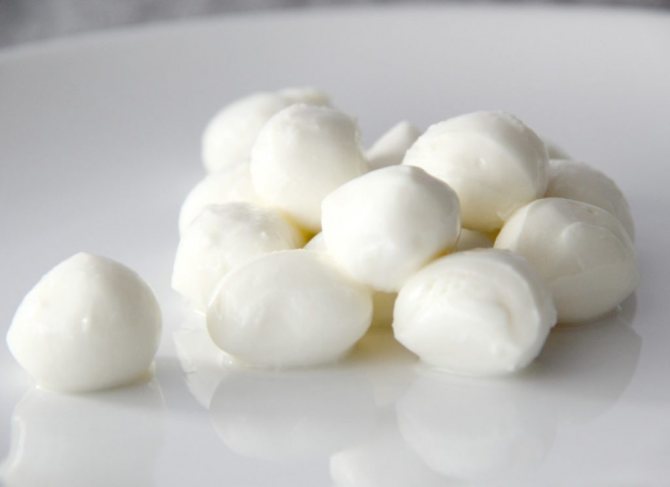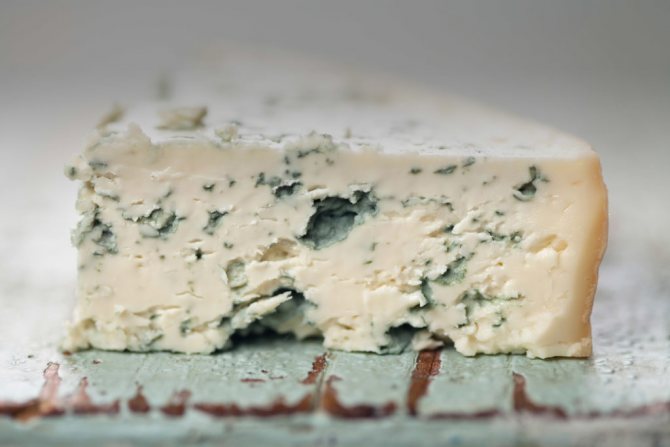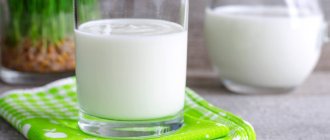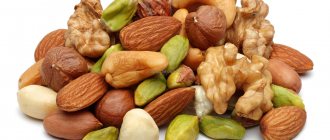To answer the question whether cheese can be consumed while breastfeeding, it is necessary to determine the composition and properties of the product. It is important to choose the type that will avoid side effects, such as colic and allergies in the baby.
Cheese during breastfeeding is a healthy product, but not all types of it are allowed for consumption during this period by a nursing woman.
Composition and benefits of cheese
Cheese is a storehouse of useful elements that are necessary for the health of mother and child. Milk protein is easily digestible and processed, does not cause difficulty in digestion, and prevents the development of fermentation processes.
Benefits of cheese:
- Thanks to its zinc content, the product renews tissue at the cellular level, strengthens the structure of hair and nails, improves the condition of the skin, and also actively fights infections.
- Calcium ensures proper blood clotting, is necessary for the structure of the skeletal system, and is responsible for the activity of nerve endings.
- Iron is an important element for the circulatory system and keeps the structure of muscle fibers in good shape.
- Phosphorus regulates the condition of muscles and bones in the newborn’s body.
- The microelement potassium regulates the functioning of the heart, the element helps cleanse the intestines of waste and toxins, and reduces the risk of fermentation processes.
- Iodine – supports the functioning of the endocrine system, is responsible for the production of the thyroid hormone thyroxine.
- Manganese stimulates enzyme activity, relieves fatigue, improves mood, and fights insomnia. This is a necessary element for cramps and calf pain.
- Selenium slows down the aging process, eliminates facial wrinkles, improves immunity, produces energy, which is so necessary for mother and child in the process of establishing guardianship.
With moderate consumption of cheese, vision improves, the functioning of the digestive system is normalized, resistance to stress increases, cholesterol decreases, the blood is purified, hormonal levels are improved, the bone skeleton and tooth enamel are strengthened, and the water-salt balance is regulated.
Is it possible for a nursing mother to goat milk?
Every young mother wants to give her baby only the best. When a child feeds on breast milk, the issue of forming his own diet becomes especially acute. After all, it is very important to eat nutritious, healthy food that will not harm the baby. In addition, mommy wants the food to be varied and tasty. Is it possible to drink goat's milk during lactation? You will find the answer to this question in this article.
Beneficial features
According to ancient Greek legends, the supreme deity of the Olympic pantheon - the thunder god Zeus - was fed with the milk of a sacred goat. Avicenna (a famous Persian doctor) recommended the product to people suffering from spleen diseases: he believed that this product contributed to a speedy recovery. And this is not surprising, because nutritionists have proven that goat's milk is more nutritious than cow's milk. It rarely provokes allergic reactions, which is extremely important for young mothers. In addition, it contains valuable vitamins and microelements. It is important that, despite its fairly high fat content, it is quickly absorbed and, unlike other fatty foods, does not complicate the digestive process.
Doctors recommend drinking fresh goat milk while breastfeeding, as it has a number of unique properties:
- strengthens bones and is an excellent prevention of rickets;
- normalizes the functioning of the digestive tract;
- helps avoid anemia and promotes hematopoiesis: goat's milk during breastfeeding is highly recommended for nursing mothers who have experienced difficult childbirth and lost a lot of blood;
- strengthens the immune system;
- improves the condition of hair and skin, which is extremely important for women who have recently given birth and want to regain their attractiveness as soon as possible;
- helps strengthen tooth enamel. This property of the product is very important for young mothers, because during pregnancy and lactation, calcium “leaks” from the woman’s body to the child, so the teeth of pregnant and lactating women tend to deteriorate greatly. Goat's milk during breastfeeding can solve this problem;
- helps get rid of constipation and flatulence;
- stimulates the functioning of the nervous system: regular consumption of goat’s milk normalizes sleep and improves mood;
- removes harmful substances and toxins from the body.
It has also been proven that its regular use helps to avoid the development of malignant neoplasms.
This is a scientifically established fact . By the way, you can also use it as a cosmetic product. If you regularly wipe your face with a cotton swab moistened with a small amount of this product, you can become the owner of soft, elastic, youthful skin.
True, the product also has one drawback. Due to its peculiar taste, many people find it quite unpleasant. Nevertheless, you can get used to its unusual taste quite quickly. In addition, in stores you can buy a pasteurized product that has a fairly soft, delicate taste.
How to use during lactation?
During breastfeeding, goat's milk can be an excellent addition to a woman's daily diet. However, in order not to harm the baby, it is important to follow the following recommendations:
We recommend reading: Milk tea for nursing mothers
- start drinking it while breastfeeding a month after the baby is born;
- start using it with one small sip. Typically, food allergies in infants appear within the first 24 hours after a nursing mother eats a new food. If after 24 hours the baby feels well, he does not have diarrhea, colic or bloating, he does not spit up more than usual and does not worry, you can safely drink a glass a day while continuing breastfeeding;
- first dilute it with water in a ratio of 1 to 1. Gradually, the volume of water can be reduced until it is completely eliminated;
- drink no more than one glass a day three to five times a week: this volume allows you to provide the body with vitamins, proteins, fats and microelements in sufficient quantities and does not burden the digestive system of the infant;
- buy only a high-quality product: a nursing mother should under no circumstances skimp on her nutrition. It is advisable to choose it from farmers who have all the necessary quality certificates;
- you should not add it to coffee or tea: this can have a bad effect on the functioning of the digestive system of both mother and child;
- Remember that it can be stored at room temperature for 24 hours. After this period, a nursing mother should under no circumstances try it. If fresh is stored in the refrigerator, it can be consumed within 48 hours, but pasteurized will remain fresh for up to five days.
The main rule is the gradual introduction of any new products into the diet of a nursing mother.
Young mothers who have never drank it before or suffer from food allergies should be especially careful. Perhaps it is advisable for them to completely abandon this healthy product and drink a more familiar cow's milk (of course, in the absence of casein intolerance).
How to choose?
Any milk, both cow's and goat's, may contain bacteria that are dangerous for mothers and infants. At the same time, they multiply quite quickly: after standing for just two days at average room temperature, the drink becomes unsuitable for consumption. Therefore, you should not purchase it from unverified places. After purchasing it, you need to boil it thoroughly.
If you purchase a product from farmers, make sure that the animal does not suffer from any diseases. Each goat must have a veterinary passport, which lists the vaccinations given to the animal. Do not hesitate to ask to see this passport: it is important for you to take care not only of your health, but also of the health of your baby.
Buying goat milk for a nursing mother at the supermarket? Carefully study the expiration date of the product. Naturally, the fresher the milk, the better it is for your health. Even if you bought it at the supermarket, be sure to boil it before using it!
By the way, if you want to get the maximum benefit from it and you are not intolerant to this product, pay attention to goat cheese or yogurt!
Can small children drink?
After reading about the amazing properties of goat's milk, a young mother may wonder: is it possible to give this miracle product to infants? We must not forget that it is not advisable to give it to the child until he reaches one year of age. The digestive system of an infant has not yet completed its formation, so it will be difficult for the gastrointestinal tract to process a product of such high fat content. As a result, the baby will experience diarrhea, colic and tummy pain.
But if for some reason a mother cannot breastfeed her child and there is no opportunity to purchase an adapted milk formula, then when choosing between cow’s and goat’s milk, it is worth choosing the latter
Goat is easier to digest, is well absorbed, and does not overload the newborn’s digestive system. Pure goat milk cannot be given to a child under one year old; it is diluted with boiled water in the proportion of 1 to 3 before 3 months, 1 to 2 after 3 months, 1 to 1 after six months. Pediatricians recommend giving no more than 100 ml of goat milk to a child at a time, otherwise digestive problems are inevitable. It is important to monitor the manifestations of allergies.
Goat milk is a valuable product that all young mothers can consume. At the same time, breastfeeding is not a contraindication; on the contrary, goat’s milk will bring many benefits during this period. However, we should not forget that the introduction of any new product into the diet should occur gradually. Consult your doctor before you start drinking goat's milk: you or your child may have contraindications.
mladeni.ru
Contraindications
It is prohibited to use the product during breastfeeding if you have intestinal diseases, urolithiasis, gastritis, ulcers, or milk protein intolerance.
During lactation, it is prohibited to introduce cheeses with added additives into the diet - mushrooms, herbs, ham, onions, bacon (see below). Such components cause bloating, colic, flatulence, nausea, vomiting, and upset bowel movements in the baby.

You should not eat cheese during breastfeeding as a separate dish; it is better to add it to a salad or make a sandwich with whole grain bread.
When and how to eat cheese
You should eat cheeses while breastfeeding carefully, in small portions, and carefully monitor the baby’s behavior. Already in the first month of a baby’s life, you can introduce this product into the diet, starting by eating one slice a day, putting it on bread or adding it to a salad. As an independent ingredient, it is prohibited to introduce cheese into food.
Over time, it is worth increasing the daily dose from 20 to 50 g.
If the baby’s condition does not worsen within 24 hours, a rash does not appear on the body, colic, bloating, or increased gas production, then you can continue to use the product. Otherwise, you can reintroduce it into the diet after 3-4 weeks.
Cheese can be added to desserts, pancakes, casseroles, snacks, sauces, hot dishes, the main thing is that it is of high quality, without additional ingredients, preservatives and dyes.
Making homemade cheese
Below are recipes for cheeses for a nursing woman, approved by pediatricians for inclusion in the menu during natural feeding.
Homemade cheese
Ingredients:
- ½ l milk;
- 125 ml natural yogurt or curdled milk.
Manufacturing steps:
- Pour the milk into the cooking vessel and wait for it to boil.
- Next, add yogurt/yogurt and mix the products.
- After boiling, remove the pan from the heat and strain its contents.
- Leave the resulting mass under pressure for a couple of hours.
The cheese is ready.
Brynza at home
Required components:
- 3 liters of goat/cow milk;
- 1 large l. table salt;
- 3 tbsp. l. apple/table/wine vinegar.
Actions:
- Pour the milk into the cooking vessel.
- After the liquid boils, add vinegar and add salt.
- While making cheese, stir the contents of the pan with a spoon (preferably wooden) until the salt is completely dissolved and the milk curdles. As a result, the curds should separate from the whey.
- Transfer the resulting mass into a colander covered with gauze and leave to drain excess liquid.
- Then place the press on a colander with the curd mass.
- Let stand for 1 – 2 hours.
The homemade product is ready to eat. This cheese must be stored in boiled brackish water.
What cheeses to choose when
In order not to harm the baby, it is important to know what kind of cheese can be consumed during lactation. You need to start introducing cheeses with low fat content, up to 10%, into the menu. The degree of maturity of the product must be taken into account. There are more than 500 types of cheeses in the world. They differ in the method of preparation, the presence of additional components, composition, and shelf life. Many of them are prohibited during lactation.
It is known that during breastfeeding it is important to maintain a water regime. You need to drink at least 2.5 liters of liquid per day. When consuming cheeses, you will be able to avoid dehydration of the body due to the natural need to “drink water” after a delicacy, especially after pickled cheeses.
Hard rennet cheeses
Hard cheeses are made from pasteurized cow's milk. They contain lactic acid bacteria, as well as an enzyme to thicken the consistency. These are Kostroma, Russian, Soviet, Dutch cheeses, as well as Gouda and Cheddar. They have a high degree of fat content and require time to ripen. Subject to quality control, such a product can be included in the menu during hepatitis B, but the daily dose should not exceed 30-50 g.

Goat cheese is a dietary product that is indispensable for consumption if you are intolerant to cow's milk protein.
Goat cheese
This is a low-calorie product. It will be an excellent substitute if a mother or child is allergic to cow's milk protein. It has a light texture, is quickly digested in the body, but can cause an increase in appetite. The fat content does not exceed 30%. It is better to introduce goat cheese made from pasteurized milk into your diet to avoid salmonella infection. When purchasing a product, you should study the composition on the packaging and consult with the seller.
Goat cheese strengthens the skeletal system, improves digestion, and is indicated for weight loss. The beneficial bacteria contained in the product prevent the development of candidiasis and vaginitis in women and have a beneficial effect on the development of the child.
Soft pickled cheeses
Brine cheeses primarily include brizna and suluguni. Products are made based on natural enzymes and dipped into a special brine for maturation. Fat content from 40 to 50%.
Cheese cheese is a low-calorie delicacy; when consumed up to 50 g per day, it destroys putrefactive bacteria in the body and facilitates digestion. However, due to the high salt content, it is not recommended for diseases of the liver, kidneys, stomach, and circulatory system.
A young cheese of Italian origin, mozzarella, is made from buffalo milk. Contains phosphorus, potassium, vitamins A, E, essential fatty acids. It is easily absorbed by the body and brings invaluable benefits to mother and child.

Mozzarella is an easily digestible variety of soft brine cheese, rich in minerals and vitamins, recommended for consumption during lactation.
Adyghe cheese is useful for gw, it has a crumbly consistency and a salty taste. Can be used a few days after the baby is born. A slice of cheese contains a daily dose of calcium, sodium, zinc, and iron. Overeating can cause heartburn and bloating.
Brine cheeses should not be consumed if you have peptic ulcers, hypertension, a tendency to edema, or kidney and liver failure. Mozzarella and feta cheese have a mild laxative effect and are indicated for consumption in the first half of the day.
Processed cheeses
Processed cheeses are less healthy during breastfeeding and contain a high percentage of sodium and phosphate salts. When the product is manufactured by unscrupulous manufacturers, substandard hard cheese and ingredients with an expired shelf life may be used in the composition.
Processed cheeses can be introduced into the mother’s diet 2-3 months after the birth of the child.
If you choose a quality product, you can provide the body with casein, fat-soluble vitamins, phosphorus and potassium.
Smoked cheeses
Smoked cheeses will not benefit the mother and child during breastfeeding; moreover, they can cause serious harm to the baby’s fragile body. In the manufacture of such a product, the technology of processing the product with liquid smoke (rather than smoking) is most often used, which leads to poisoning of the child’s fragile body.
Blue cheese
Blue cheeses are not recommended during breastfeeding! Such delicacies are distinguished by their extravagance and the presence of various components that are used to mature the product. This cheese contains the fungus penicillin, which belongs to the class of antibiotics. May cause an allergic reaction, as well as addiction to the medicine. This will create a danger when treating viral and bacterial infections (antibiotics will be ineffective in fighting the disease).
However, blue cheeses are rich in protein, calcium, and contain amino acids that strengthen the muscles of the body. If you choose a quality product, you can consume such delicacies in quantities of up to 30 g per day a year after the birth of the baby.

Noble cheeses with mold, as well as various cheeses with additives, are not recommended for consumption during the period of pregnancy, at least until the child reaches the age of 1 year.
Cheeses with additives
It is important to exclude cheeses with additives from the menu during breastfeeding. They will do more harm than good due to various preservatives, dyes, thickeners, taste and smell stimulants. If you pay attention to the composition of the product, you can note the presence of E-shek (339, 450, 451, 1412), a preservative nisin - an antibiotic to increase the shelf life of the product (up to six months).
How to make cheese for a nursing mother at home?
Making your own cheese is not difficult. There are many recipes with minimal investment of money, time and effort.
From sour cream and milk
The product is similar to the Adyghe one with a delicate milky taste. You will need:
- 1 liter of milk;
- 0.2 l sour cream;
- 3 eggs;
- 2 tsp salt.
Preparation:
- Boil the milk.
- Separately, mash the sour cream and eggs. It is better to mix with a mixer so that the mass is homogeneous.
- Slowly pour the sour cream and egg mixture into the boiling milk, stirring constantly.
- After 3-5 minutes the whey will separate. Line a colander with 4 layers of gauze and pour the whey and cheese lumps into it.
- Wrap the ends of the gauze and place pressure on top.
- Let the liquid drain for an hour.
- Place the product in the refrigerator.
- After 5 hours the cheese is ready.
It’s convenient to prepare it overnight so you can serve it for breakfast in the morning.
Creamy
The product turns out tender, similar to Philadelphia. It has a sweetish taste and a soft, uniform consistency. You will need:
- 0.5 liters of sour cream;
- 1 liter of unflavored yogurt;
- 1 tsp salt.
Preparation:
- Mix yogurt and sour cream well. Add some salt.
- Line the colander with gauze, taken in 4-5 layers.
- Add yogurt and sour cream.
- Cover with the edges of gauze, place a plate and weight on top.
- Place in the refrigerator overnight.
- In the morning, take out the finished product and transfer it to another bowl.
This cheese without added salt is used to make baking cream and is great for baked cheesecake.

It's easy to make processed cheese from cottage cheese. Mushrooms, tomatoes, spices, herbs, bacon, etc. are suitable as flavoring additives. It is used for salads, baked goods, pizza. For preparation you will need the following ingredients:
- 0.4 kg cottage cheese;
- 0.1 kg butter;
- 2 eggs;
- 1 tsp soda
Preparation:
- Grind the cottage cheese through a sieve to obtain a homogeneous mass.
- Mix eggs with soda.
- Add softened butter to the egg mixture.
- Mix all ingredients and place in a non-stick pan.
- Place the food on the fire.
- Stir so they don't burn.
- When the mass softens and becomes homogeneous, remove the cheese from the heat and transfer to a bowl to cool.
- When the product reaches room temperature, put it in the refrigerator.
The finished cheese has a yellowish tint and a fresh taste of a processed dairy product.
If you have goat's milk, make goat cheese. You will need:
- 2 liters of goat milk;
- 1 lemon;
- a pinch of salt.
Preparation:
- Wash the lemon and put it in hot water for a quarter of an hour. Roll the fruit on the table.
- Salt the milk.
- Heat the liquid, but do not boil. When bubbles form in the milk, add lemon juice to it.
- Stir to form whey.
- Place gauze in a colander in 4 layers.
- Place it over a container and drain the milk.
- Leave the cheese for 1 hour to drain the whey.
- Transfer the finished product into a container and put it in the refrigerator.
To obtain hard cheese, place pressure on top.
Mommy must replenish calcium reserves in her body every day. This can be done quickly with cheese: it contains 10 times more trace elements than milk. But be careful when choosing product varieties. Choose high-quality hard or soft cheeses, avoiding pickled and flavored cheeses. Or prepare the product yourself: this way you will be sure of its composition and safety for health.











